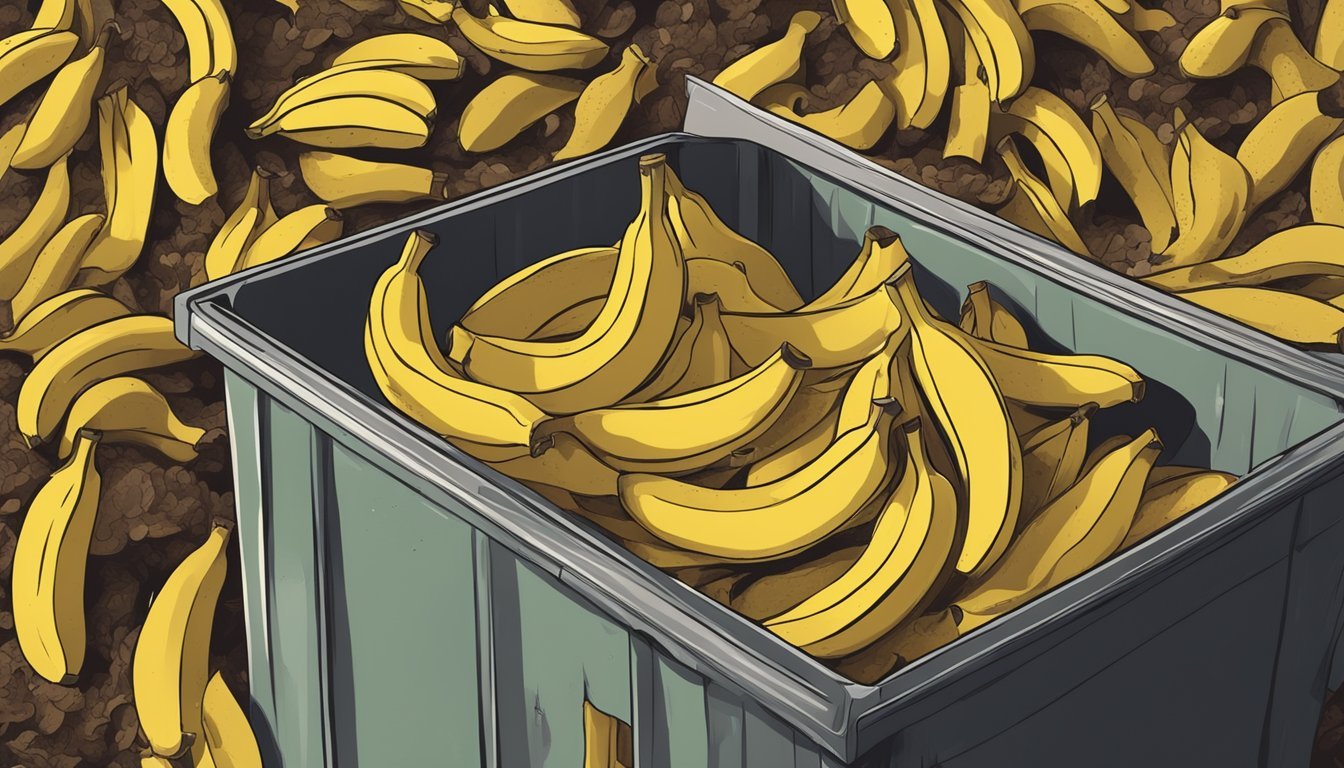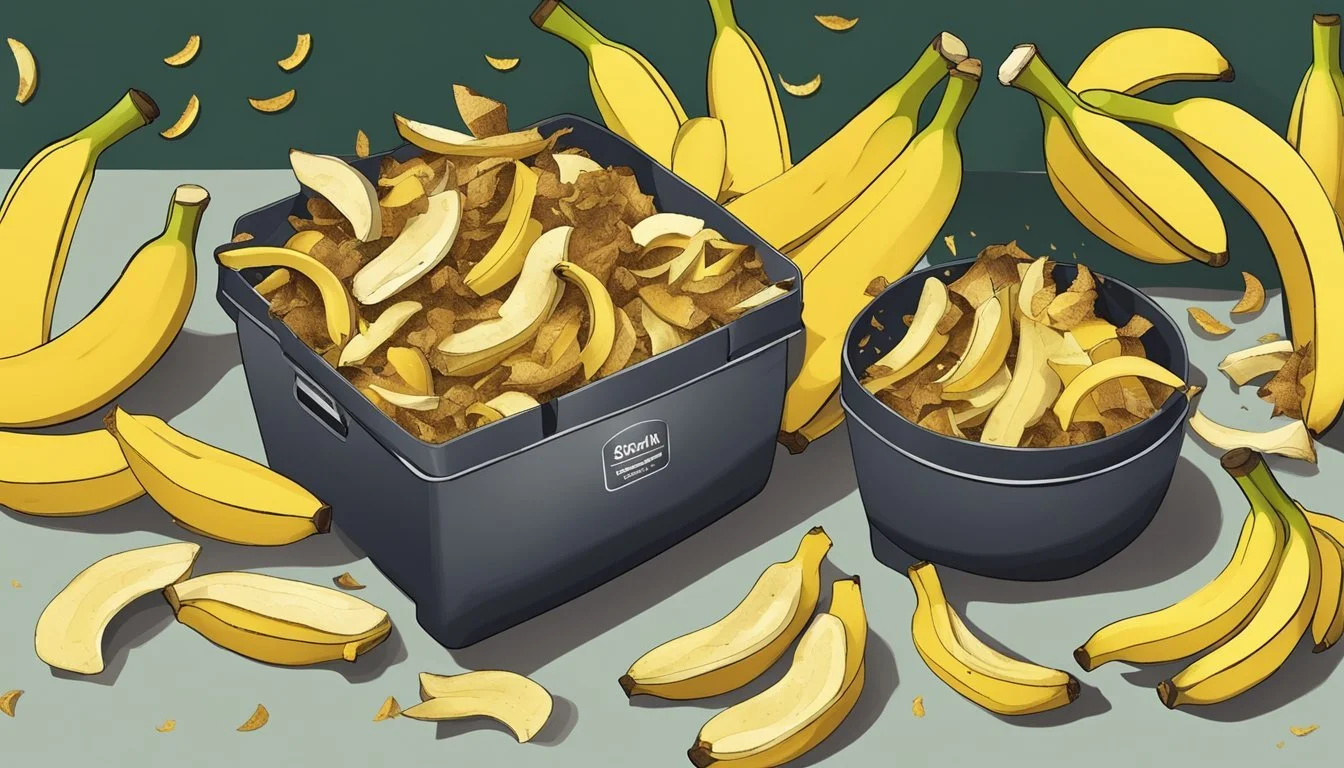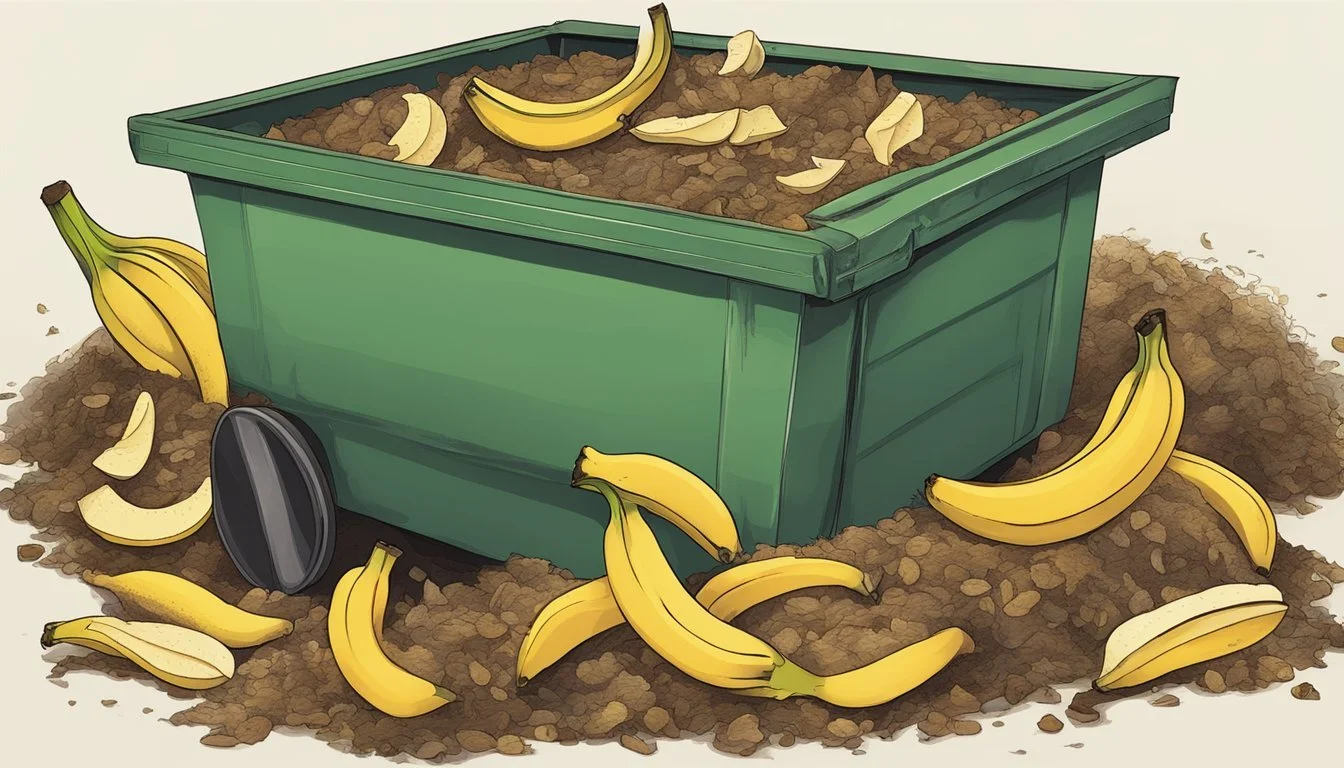Can You Compost Banana Peels?
Unveiling the Truth about Organic Waste Recycling
Banana peels are a common kitchen waste, and many gardeners and eco-conscious individuals often ponder whether these peels can be used in their compost bins. The answer is a resounding yes. Banana peels are an excellent addition to compost as they break down readily and enrich the final compost with essential nutrients. When incorporated into compost, banana peels contribute potassium, phosphorus, and calcium, key components that support plant growth and development.
Composting banana peels helps in reducing waste and creating a valuable garden resource. The process involves microbial activity that decomposes these peels, turning them into a nutrient-rich amendment for soil. This not only recycles kitchen scraps but also helps balance pH levels in compost, fostering a more productive decomposition environment.
Given that banana peels decompose easily, they are fit for various composting methods, including traditional piles, bins, vermicomposting, and bokashi composting systems. While whole peels can be added to a compost pile, cutting them into smaller pieces can accelerate the breakdown process and integrate their nutrients into the compost more quickly. As such, banana peels serve as an excellent input material for those looking to create a nutrient-dense compost for their gardens.
Composting Essentials
When adding banana peels or any organic matter to a compost, one must understand the key factors that influence the composting process. These include the presence of oxygen, the right level of moisture, adequate temperature, and proper aeration. These elements work synergistically to ensure efficient decomposition.
Oxygen is crucial as it supports the growth of aerobic bacteria that break down organic matter. A well-aerated compost pile will decompose more quickly and evenly.
Moisture must be monitored to maintain a level that is comparable to a wrung-out sponge. This is the optimal condition for microbial activity, which is responsible for the decomposition of banana peels and other organic waste.
Temperature plays a significant role as well. A compost pile that is warm, but not excessively hot, accelerates decomposition without killing beneficial microorganisms.
To facilitate aeration and maintain temperature, it's advisable to turn the compost regularly, which introduces oxygen and aids in evenly distributing heat and moisture throughout the pile.
In terms of composition:
"Greens", such as banana peels, are nitrogen-rich and contribute to quicker decomposition.
"Browns", carbon-rich materials like dry leaves or newspaper, balance out the nitrogen in greens.
A general guideline for a balanced compost is to maintain a ratio of browns to greens. Here is a simplified ratio to consider:
Material Nitrogen (Greens) or Carbon (Browns) Example Ratio Banana Peels Greens (Nitrogen) 1 Dry Leaves Browns (Carbon) 3
By adhering to these essentials, one can ensure that banana peels and other organic matter transform into nutrient-rich compost effectively.
Benefits of Composting Banana Peels
Composting banana peels contributes valuable nutrients to the garden while supporting a sustainable waste management practice.
Nutritional Advantages
Banana peels are a rich source of essential nutrients beneficial to plant growth. When added to compost, they decompose and enrich the soil with several minerals:
Potassium: Vital for plant health, it aids in disease resistance and water regulation.
Phosphorus: Supports the development of roots and flowers.
Calcium: Crucial for cellular growth and stability.
Magnesium: A core component of chlorophyll, essential for photosynthesis.
Nitrogen: Although lower in content than other materials, it is a key nutrient for leaf growth.
By incorporating banana peels into compost, gardeners add an organic source of these nutrients, which helps plants thrive.
Environmental Impact
Composting banana peels turns organic waste into a resource, rather than sending it to a landfill where it would release methane, a potent greenhouse gas. This eco-friendly practice reduces carbon footprint and promotes a more sustainable practice in waste management. It also enhances soil health, reducing the need for chemical fertilizers which can harm the environment. In this way, composting banana peels supports a cycle of nutrient recycling that benefits both the gardens and the larger environment.
Pre-Composting Preparation of Banana Peels
Before adding banana peels to a compost pile, some preparation is necessary to ensure efficient decomposition and nutrient release. The following steps provide a clear guide for effectively incorporating banana peels into the composting process:
Remove Stickers: The initial step is to peel off any stickers from the banana skins. These stickers are not biodegradable and can contaminate the compost with plastics or other harmful substances.
Chop the Peels: Cutting the banana peels into smaller pieces accelerates their breakdown. Smaller pieces provide more surface area for microorganisms to work, speeding up composting.
Kitchen Scraps Mix: Banana peels are high in important nutrients like potassium, which benefits plant growth. They should be mixed with other kitchen scraps to create a balanced compost mixture. The variety in kitchen scraps ensures a good mix of green (nitrogenous) and brown (carbonaceous) materials.
Balancing the Compost Pile:
Material Type Examples Green Materials Banana peels, vegetable scraps Brown Materials Dry leaves, sawdust, cardboard
Carbon Balance: It's imperative to balance the banana peels with carbon-rich materials to maintain the right carbon-to-nitrogen ratio. Materials such as dry leaves, straw, or sawdust will help to create the necessary balance.
Incorporating banana peels into compost is a straightforward way to enrich the compost with beneficial nutrients. The proper preparation of banana peels, from sticker removal to chopping and balancing with carbon, is key in achieving a healthy compost environment.
Composting Methods for Banana Peels
Banana peels are a valuable source of nutrients for compost, offering a boost of minerals like potassium and phosphorus when decomposed properly. Several methods can be employed to compost banana peels effectively and efficiently.
Traditional Composting
Traditional composting involves adding banana peels to a compost pile or bin as part of the green materials, which are rich in nitrogen. It's important to balance them with brown materials, such as dried leaves or shredded paper, to ensure a proper carbon-to-nitrogen ratio. Tip: Chop or shred the peels to accelerate decomposition.
Vermicomposting
Vermicomposting uses worms, typically red wigglers, to break down organic waste. Banana peels can be included in a worm farm but should be introduced in moderation to prevent over-acidification. Caution: Always pre-compost or freeze banana peels before adding them to your worm bin to avoid attracting fruit flies.
Trench Composting
Trench composting involves burying banana peels directly in the garden soil. Dig a trench 12 inches deep and bury the peels under at least 8 inches of soil. This method acts as a slow-release fertilizer and is a hassle-free way to incorporate peels directly near plant roots.
Hot vs. Cold Composting
Hot Composting: This is an accelerated composting method where temperature plays a crucial role. Composting banana peels in a hot composting system, often in a tumbler or aerated pile, requires maintaining a temperature between 135°F and 160°F to break down material quickly.
Cold Composting: Less intensive than hot composting, cold composting simply involves adding banana peels to a pile without managing temperature. Breakdown is slower, and peels can be added over time as part of regular kitchen waste.
Optimizing Composting Conditions
Ensuring the proper conditions for composting banana peels will accelerate decomposition and enhance nutrient content. Paying attention to four key areas—material balance, moisture and aeration, temperature management, and pest control—is crucial for a successful composting process.
Balancing Greens and Browns
For effective composting, a balance between green (nitrogen-rich) and brown (carbon-rich) materials is essential. Banana peels, rich in potassium, calcium, and sodium, are classified as green materials. They should be mixed with brown materials such as straw, dry leaves, or shredded paper to create an ideal carbon to nitrogen ratio. A general guideline is to have a 3-to-1 brown-to-green ratio:
Brown Materials: Provides carbon
Examples: Straw, dead leaves, cardboard
Green Materials: Provides nitrogen
Examples: Banana peels, grass clippings, coffee grounds
Managing Moisture and Aeration
The moisture level and oxygen availability are critical for the compost's microorganisms. Compost should feel like a wrung-out sponge, moist but not waterlogged, maintaining about 40-60% moisture. To ensure good aeration:
Turn the compost regularly to incorporate oxygen.
Avoid compacting to maintain water-holding capacity.
Temperature and Decomposition Control
The temperature within a compost pile affects the decomposition process. A pile between 135°F to 160°F is ideal, as it speeds up decomposition while killing most weed seeds and pathogens. Regularly monitor the temperature and turn the pile if it exceeds 160°F, as higher temperatures can kill beneficial microorganisms.
Pest and Odor Management
Composting can attract pests and produce odors when not managed correctly. To prevent this:
Bury banana peels under other compost material to deter fruit flies.
Ensure a proper balance of greens and browns to avoid strong odors.
Consider a compost bin with a lid for additional pest control.
Using Banana Peel Compost
Banana peel compost serves as a resourceful way to return valuable nutrients to the soil, benefiting garden plants. Rich in potassium, phosphorus, and calcium, this nutrient-rich compost can be used directly or transformed into liquid fertilizer to support soil health and encourage robust plant growth.
Direct Fertilizer Application
One can apply banana peel compost directly to the garden soil. This approach slowly releases nutrients as the compost breaks down. It is recommended to cut the banana peels into smaller pieces before adding them to the compost bin, ensuring faster decomposition. When the compost is ready, gardeners can mix it into the soil around the base of their plants, improving nutrient content and soil structure.
Creating Compost Tea
For gardeners preferring a liquid fertilizer, compost tea can be made from banana peels. Here is a simple method to create banana peel compost tea:
Fill a jar with water and add a few banana peels.
Allow the mixture to steep for a few days, up to a week.
Remove the banana peels and dilute the tea with water if it appears very strong.
Use the diluted banana peel compost tea to water plants, providing a quick nutrient boost.
Benefits to Plants and Soil
Banana peel compost delivers considerable advantages to garden plants and the overall soil ecosystem:
Nutrient Supply: The compost is rich in essential nutrients which help in the healthy growth of garden plants, especially fruiting ones.
Soil Health: Adding compost improves soil structure, supports microbial activity, and enhances moisture retention.
Sustainable Practice: Utilizing banana peels in compost is an environmentally friendly way to recycle kitchen waste and reduce landfill contributions.
By incorporating banana peel compost into gardening practice, one can nourish plant life and sustain a healthier ecosystem within their garden space.
Troubleshooting Common Composting Issues
When composting banana peels, it's vital to maintain balance in the compost pile to prevent issues such as excess water, dryness, odors, and slow decomposition. Here are specific ways to address these common composting challenges:
Excessive Moisture Concerns
To manage moisture levels, ensure proper drainage and balance with brown compost materials such as dry leaves, twigs, or sawdust. This will help absorb excess water and create air pockets that facilitate aerobic decomposition.
Signs of excess moisture:
Soggy compost
Compaction
Remedies:
Add brown materials
Turn the pile to improve airflow
Dry Material Challenges
A compost pile that’s too dry may not decompose effectively. To introduce adequate moisture, one can add water gradually, ensuring that the contents feel like a 'wrung-out sponge.'
Signs of insufficient moisture:
Dry and crumbly texture
Lack of decomposition
Remedies:
Mix in wet green materials or water
Cover pile to retain moisture
Odor and Pest Troubles
Banana peels can attract pests or cause odors if not managed properly. To prevent this, bury banana peels deep within the compost and maintain a balance between green and brown materials.
Signs of imbalance:
Strong, unpleasant odors
Vermin presence
Remedies:
Correct ratio of green to brown materials
Ensure peels are covered by compost
Slow Decomposition
Slow decomposition can occur from low temperatures or insufficient nitrogen-rich material. Cold composting can be sped up by adding more greens or turning the pile to incorporate oxygen, which heats up and speeds the composting process.
Signs of slow decomposition:
Compost remains unchanged
Low temperature of the pile
Remedies:
Add more green materials
Turn the pile to introduce oxygen




